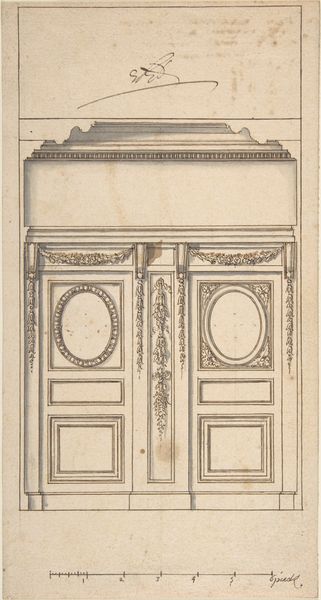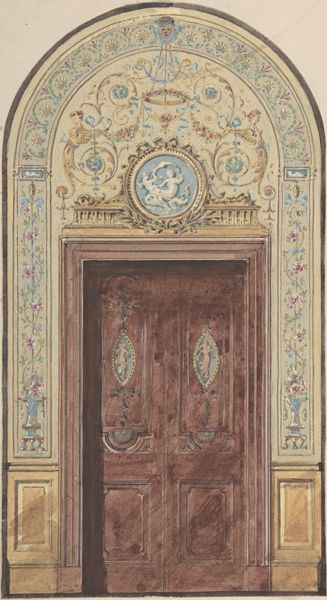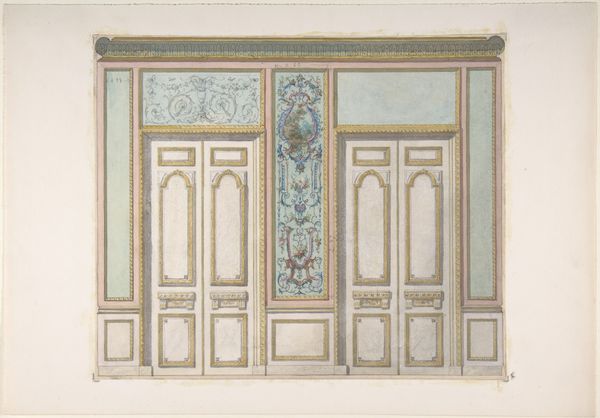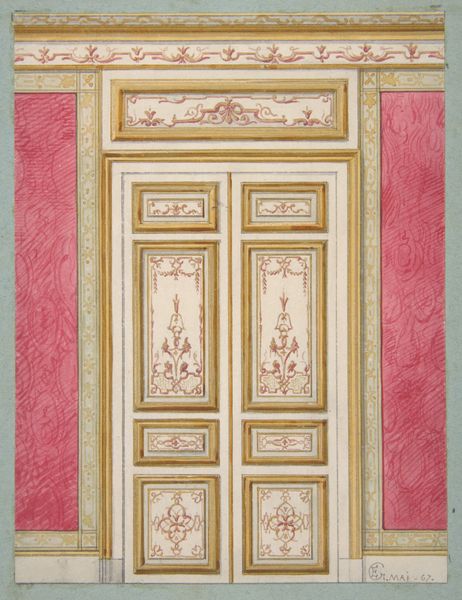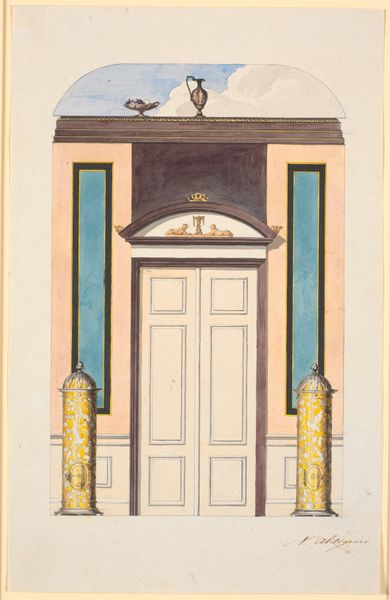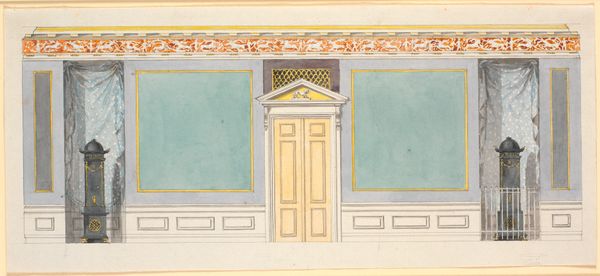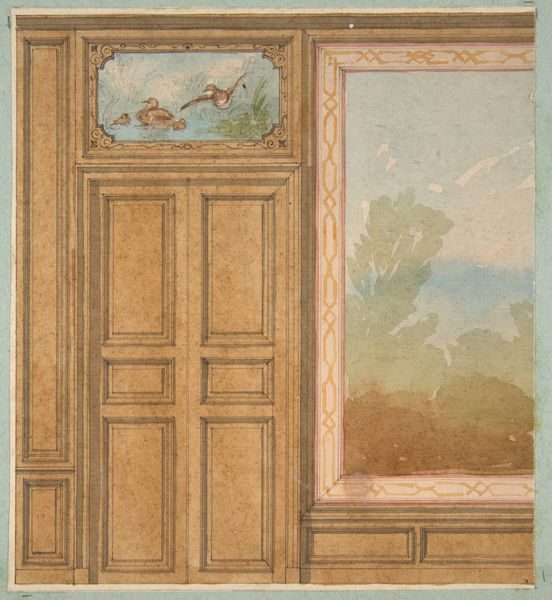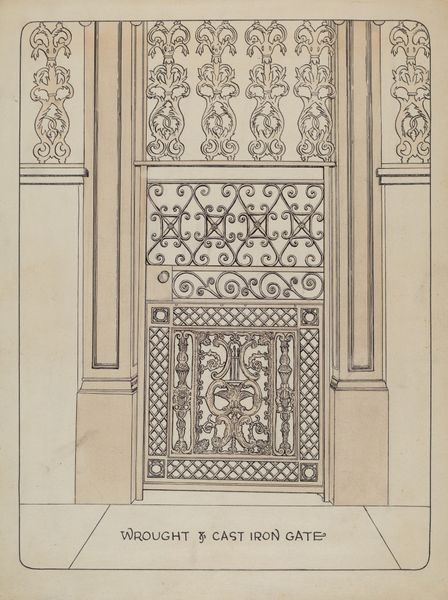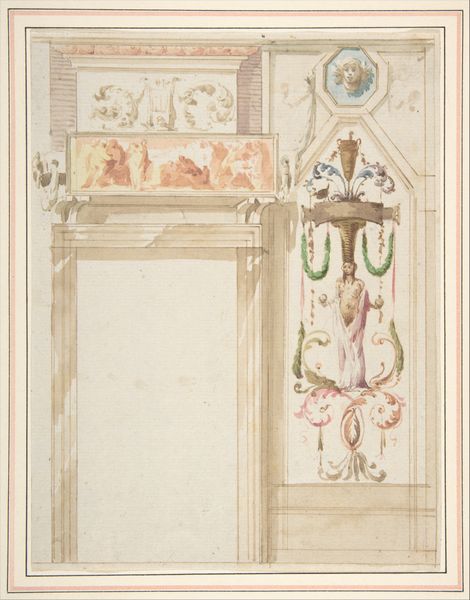
Design for Single Door and Overdoor Panel with Cupids Bearing a Violin 1850 - 1900
0:00
0:00
Dimensions: 8 3/4 x 4 3/4 in. (22.2 x 12.1 cm)
Copyright: Public Domain
Curator: Look at this, wouldn't you say it whispers of summer gardens and stolen kisses? Editor: Certainly ornate. Before us is "Design for Single Door and Overdoor Panel with Cupids Bearing a Violin," likely crafted between 1850 and 1900. The artist is Jules-Edmond-Charles Lachaise, and it's rendered in watercolor and print— a fascinating mix. Curator: Watercolors on a door design! Isn't that just the dreamiest form of impracticality? Makes you wonder about the commissioner. Editor: Impractical, perhaps, until we think about reproduction. The print aspect allows multiple copies, disseminating this ideal. Think about the labour required: carpenters to execute the design, printmakers to create and circulate it, all fueled by a market demanding neoclassical refinement. Curator: You always bring it back to the nuts and bolts, don’t you? But look at the cherubs— such cheeky little musicians! Are they dragging that poor violin? It feels so… mischievous! Like the sound coming out is utterly delightful chaos. Editor: Note the cherubs' arrangement; pulling instruments seems at odds with their purpose of love and harmony. Perhaps Lachaise is commenting on the cost of this elegance, or the discord inherent in manufactured beauty. The earthy tones speak to materials: pigment, wood, maybe even a commentary on labor extracted from the earth? Curator: Oh, I much prefer imagining they’re about to orchestrate a party that spills out into eternity. Don't forget, the style embraces neoclassical aesthetic ideals, too, referencing earlier themes, adding context to the cherubs and overall look of order. It does present the idea that even the most structured door, leads somewhere unknown. Editor: I find myself more interested in the process of its becoming and subsequent application as it reflects an industry of decor, desire and the skilled individuals shaping it. A door's primary function is transition; here, we transition into examining class and production of luxury. Curator: A somber ending! But maybe, just maybe, beyond all the industry, some of the pure whimsy still manages to peek through. Editor: And maybe that whimsy distracts us from more systemic concerns. It's all a balancing act, isn’t it?
Comments
No comments
Be the first to comment and join the conversation on the ultimate creative platform.
